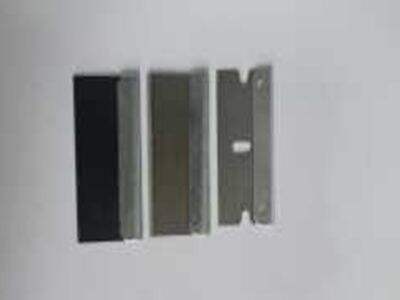There are two that come to mind when it comes to choosing the blade you will use, those would be the hook blade and the straight blade. In this article you will see different of both and when to use the hook blade or straight blade for better results.
Hook Blade vs. Straight Blade
Two types of blades are generally used to do the same action: Cutting apart different mediums by using either a hook blade or straight edge razor blades. Hook blade: The hook blade is shaped like it sounds, whereas the straight one is just a blade. Each blade type has its own distinctive features which makes it perfect for specific cutting jobs.
When a Hook Blade is More Beneficial
They are especially useful in cutting material that is normally difficult to cut though using a conventional straight blade (i. e., rope, line, seatbelt), or when one cannot use both hands to apply force to the knife. Fighting against a curved shape the hook blade cuts through tough materials such as carpet, rubber and cardboard with ease. The hook blade is great for cutting thick or multi-surface materials efficiently because the curved shape enables a steady consistent angle throughout your cuts.
Perhaps the biggest benefit of a hook blade is that it allows you to very easily snag materials and pull them back towards yourself while cutting. Having a table provides better control of the cutting and prevents the blade from sliding or sticking. A hook blade also helps for cutting curves, as the curved body of the blade allows cleaner, smoother cuts.
Best Time to Use a Precision Straight Blade
A hook blade is fantastic for cutting materials which are tough or for making curved cuts but, as those of you used to working with a straight blade might agree, sometimes a straight blade is more useful. Straight Blades: For tasks where straight cuts are needed, and precision cutting is very important (straight, clean cuts). A straight blade is used to cut paper, fabric or thin plastic sheets.
Straight blades are also ideal for materials that need precision, like cutting out fine shapes or patterns. Straight blade is ideal for control; precision snips. Also, for soft or delicate materials, you want to have a straight edge safety razor blade so it can easily slice through without leaving any frays.
Understanding When To Use A Hook Blade
Ultimately, both hook blade and straight blade have their own benefits and fit well with unique cutting applications. Hook blade: If you want to cut through difficult materials or bendy cuts, get a hook blade. On the other hand, if you do have such requirements as a need for precision cuts or dealing with more sensitive materials than a straight blade works better instead.
As for which one you should use versus another, it depends on what material you'll be cutting and what exactly you need to cut. Knowing which blade type is better fit for every individual need can ensure that you achieve the results everytime.
Cutting materials very briefly, it is crucial to select the best blade for your work. Whether you are dealing with heavy materials that necessitate a hook blade, or want to make accurate cuts with a straight blade, Baishili has the perfect blade for all your cutting requirements. Anyway, the point is: So next time you get into a blade mode, do not forget to think if it will be done better with Hook Blade or Straight Blade.












































